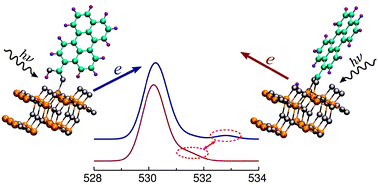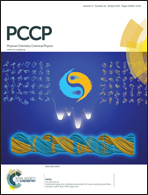Identification of the dye adsorption modes in dye-sensitised solar cells with X-ray spectroscopy techniques: a computational study
Abstract
Adsorption geometry of dye molecules can have a substantial impact on the efficiency and functional lifespan of a dye-sensitised solar cell (DSSC) and therefore, its reliable assessment is an important step in engineering more efficient DSSCs. X-ray photoelectron spectroscopy (XPS) of oxygen is empirically proved to be the most efficient technique in distinguishing between the two most occurring adsorption geometries, i.e. monodentate and bidentate. In this computational study, we provide a comprehensive analysis of XPS and X-ray absorption spectroscopy (XAS) of carbon and oxygen for these binding modes in a perylene-sensitised TiO2. We confirm that O 1s XPS has an excellent sensitivity in mode identification. Moreover, we show that adsorption has a great impact on the XPS binding energies and reduces them by ∼4 eV, and using this effect, we extend the XPS usage to study dye desorption in the cell. Finally, our results for XAS indicate that although less sensitive, the spectra from carbon can be used in mode detection.


 Please wait while we load your content...
Please wait while we load your content...